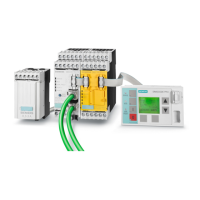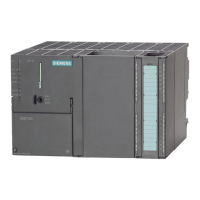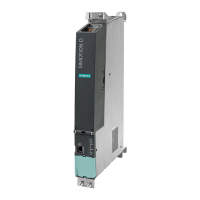Communication
2.4 EtherNet/IP communication
SIMOCODE pro - Communication
Function Manual, 11/2018, A5E40508495002A/RS-AC/003
111
The device which initiates a connection or a request. It can be regarded as the "master".
The device which receives the connection or service request. A scanner can normally be
integrated in a network with multiple adapters.
A predefined collection of data stored in the adapter. Each data collection is identified by a
unique instance number. It is further identified by size and type. Three types of assembly are
those which generate (data to be sent), consume (data to be received) and configure
(information required to parameterize the device).
The MAC address can generally be read from the front on the device,
e.g.: 08-00-06-6B-80-C0.
Message-based application protocol. This protocol implements a relative path for sending a
message from the modules that generate the message in one system to the modules that
consume the message. CIP operates with a generator-consumer model rather than a
source-destination model (master/slave). With a generator-consumer model, the volume of
network traffic is lower and transmission times shorter.
Abbreviation for EtherNet/IP.
Requested Packet Interval (RIP)
EtherNet/IP devices normally generate or consume data on the basis of an RPI value
(Requested Packet Interval). Generating devices transmit data packets in predefined time
intervals on the basis of RPI, while consumer devices wait for data packets at a specific RPI.
